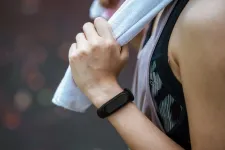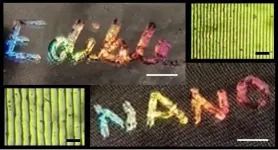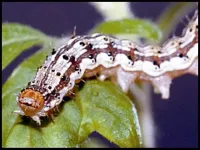(Press-News.org) Wearable sleep tracking devices - from Fitbit to Apple Watch to never-heard-of brands stashed away in the electronics clearance bin - have infiltrated the market at a rapid pace in recent years.
And like any consumer products, not all sleep trackers are created equal, according to West Virginia University neuroscientists.
Prompted by a lack of independent, third-party evaluations of these devices, a research team led by Joshua Hagen, director of the Human Performance Innovation Center at the WVU Rockefeller Neuroscience Institute, tested the efficacy of eight commercial sleep trackers.
Fitbit and Oura came out on top in measuring total sleep time, total wake time and sleep efficiency, the results indicate. All other devices, however, either overestimated or underestimated at least one of those sleep metrics, and none of the eight could quantify sleep stages (REM, non-REM) with effective accuracy to be useful when compared to an electroencephalogram, or EEG, which records electrical activity in the brain.
The study is published in the Nature and Science of Sleep.
"The biggest takeaway is that not all consumer devices are created equal, and for the end user to take care in selecting the technology to suit their application based on the data," Hagen said. "Some devices are currently performing well for total sleep time and sleep efficiency, but the community at large seems to still struggle with sleep staging (deep, REM, light). This is not surprising, since typically brain waves are needed to properly measure this. However, when thinking about what you generally have control over with your sleep - time to bed, time in bed, choices before bed that impact sleep efficiency - these can be accurately measured in some devices."
Researchers observed five healthy adults - two males, ages 26 and 41, and three females, ages 22, 23 and 27 - who participated by wearing the sleep trackers for a combined total of 98 nights.
The commercial sleep technologies displayed lower error and bias values when quantifying sleep/wake states as compared to sleep staging durations. Still, these findings revealed that there is a remarkably high degree of variability in the accuracy of commercial sleep technologies, the researchers stated.
"While technology, both hardware and software, continually advances, it is critical to evaluate the accuracy of these devices in an ongoing fashion," Hagen said. "Updates to hardware, firmware and algorithms happen continuously, and we must understand how this affects accuracy."
Research in this area will evolve with the technology, added Hagen, who himself utilizes four to five sleep devices to keep monitoring his ZZZs.
"I'm a big believer in living the research," he said. "I need to understand what the consumer sees in the smartphone apps, what the usability of the devices is, etc. Without that objective sleep data, you can only rely on how you feel when you wake up - and while that is important, that doesn't tell the whole story. If your alarm goes off and you happen to be in a deep sleep stage, you will wake up very groggy, and could feel as though that sleep was not restorative, when in fact it could have been. It's just not subjectively noticeable right at that moment."
At the end of the day, however, it's up to the user's needs as to which product may be most suited for that person, Hagen added.
"After accuracy, it comes down to logistics. Do you prefer a watch with a display? A ring? A mattress sensor? What is the price of each? Which smartphone app is most appealing? But again, that is if all accuracies are close to equal. If the price is right and the form factor is ideal, but the data accuracy is extremely poor, then those factors don't matter."
The Human Performance Innovation Center works with members of the US military along with collegiate and professional athletes to better understand and optimize human performance, resiliency, and recovery, applying these findings to solutions for the general and clinical populations.
INFORMATION:
Joining Hagen in the study from WVU were Jason Stone, Lauren Rentz, Jillian Forsey, Jad Ramadan, Victor Finomore, Scott Galster and Ali Rezai.
Citation: Evaluations of Commercial Sleep Technologies for Objective Monitoring During Routine Sleeping Conditions
SAN ANTONIO -- Patients should be assessed for frailty before having many types of surgery, even if the surgery is considered low risk, a review of two national patient databases shows.
Frailty is a clinical syndrome marked by slow walking speed, weak grip, poor balance, exhaustion and low physical activity. It is an important risk factor for death after surgery, although the association between frailty and mortality across surgical specialties is not well understood.
The study, conducted by faculty at multiple institutions including The University of Texas Health Science Center at San Antonio (UT Health San Antonio), mined patient data from the Veterans Affairs (VA) Surgical Quality Improvement Program and the American College of Surgeons (ACS) National Surgical Quality ...
The millions of people affected by 2020's record-breaking and deadly fires can attest to the fact that wildfire hazards are increasing across western North America.
Both climate change and forest management have been blamed, but the relative influence of these drivers is still heavily debated. The results of a recent study show that in some ecosystems, human-caused climate change is the predominant factor; in other places, the trend can also be attributed to a century of fire suppression that has produced dense, unhealthy forests.
Over the past decade, fire scientists have made major progress in understanding climate-fire relationships at large scales, such as across western North America. But a new paper published in the journal Environmental Research ...
ROCHESTER, Minn. -- Mayo Clinic researchers have developed a novel proton therapy technique to more specifically target cancer cells that resist other forms of treatment. The technique is called LEAP, an acronym for "biologically enhanced particle therapy." The findings are published today in Cancer Research, the journal of the American Association for Cancer Research.
"The human body receives tens of thousands of DNA lesions per day from a variety of internal and external sources," says Robert Mutter, M.D., a radiation oncologist at Mayo Clinic and co-principal investigator of the study." Therefore, cells have evolved complex repair pathways to efficiently repair damaged DNA. Defects in these repair pathways ...
With the seemingly unstoppable advancement in the fields of miniaturization and materials science, all sorts of electronic devices have emerged to help us lead easier and healthier lives. Wearable sensors fall in this category, and they have received much attention lately as useful tools to monitor a person's health in real time. Many such sensors operate by quantifying biomarkers, that is, measurable indicators that reflect one's health condition. Widely used biomarkers are heartrate and body temperature, which can be monitored continuously with relative ease. On the contrary, ...
Holograms are everywhere, from driver's licenses to credit cards to product packaging. And now, edible holograms could someday enhance foods. Researchers reporting in ACS Nano have developed a laser-based method to print nanostructured holograms on dried corn syrup films. The edible holograms could also be used to ensure food safety, label a product or indicate sugar content, the researchers say.
Most holograms are imprinted with lasers onto metal surfaces, such as aluminum, but the materials aren't edible. For foods, holograms made with nanoparticles have been proposed, but the tiny particles can generate reactive oxygen species, which might be harmful for people to eat. In a different approach, food scientists have ...
ROCHESTER, Minn. -- A new study by Mayo Clinic researchers has identified that a chromosome instability gene, USP24, is frequently missing in pediatric patients with neuroblastoma, an aggressive form of childhood cancer. The finding provides important insight into the development of this disease. The study is published in Cancer Research, the journal of the American Association for Cancer Research.
"Neuroblastoma is a highly aggressive cancer that nearly exclusively affects young children," says Paul Galardy, M.D., a pediatric hematologist and oncologist at Mayo Clinic. Despite the use of multiple treatment approaches, Dr. Galardy says many children die of this disease every year.
To identify new ...
A mutation in the spike protein of SARS-CoV-2--one of several genetic mutations in the concerning variants that have emerged in the United Kingdom, South Africa, and Brazil--makes the virus up to eight times more infectious in human cells than the initial virus that originated in China, according to research published in the journal END ...
Scientists have discovered a never-before-seen biodiversity pattern of coral reef fishes that suggests some fishes might be exceptionally vulnerable to environmental change.
A new study shows plankton-eating coral reef fishes (planktivores) are far more diverse than others in the Indo-Australian Archipelago, a global marine biodiversity hotspot.
The findings highlight, for the first time, a unique link between the diet and distribution of species across the marine realm.
"The archipelago is one of the most complex and dynamic geological regions in the tropics," said lead author Dr Ale Siqueira from the ARC Centre of Excellence for Coral Reef Studies at James Cook University (Coral CoE at JCU). "And its ...
Teens who bully, harass, or otherwise victimize their peers are not always lashing out in reaction to psychological problems or unhealthy home environments, but are often using aggression strategically to climb their school's social hierarchy, a University of California, Davis, study suggests. These findings point to the reasons why most anti-bullying programs don't work and suggest possible strategies for the future.
"To the extent that this is true, we should expect them to target not vulnerable wallflowers, but their own friends, and friends-of-friends, who are more ...
UNIVERSITY PARK, Pa. -- Like a scene from a horror movie, tomato fruitworm caterpillars silence their food plants' cries for help as they devour their leaves. That is the finding of a multidisciplinary team of researchers, who said the results may yield insights into the abilities of crop plants -- such as tomato and soybean -- to withstand additional stressors, like climate change.
"We have discovered a new strategy whereby an insect uses saliva to inhibit the release of airborne plant defenses through direct manipulation of plant stomata," said Gary Felton, professor and head of the Department of Entomology at Penn State, noting that stomata are tiny pores on plant leaves that regulate gas exchange, including plant defensive emissions ...





